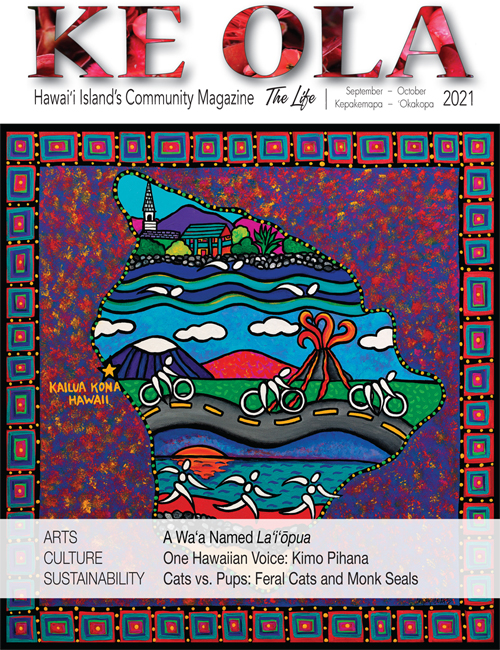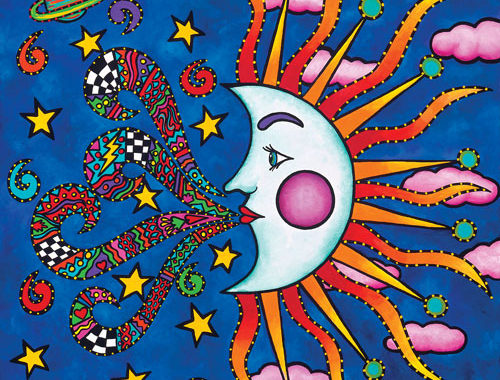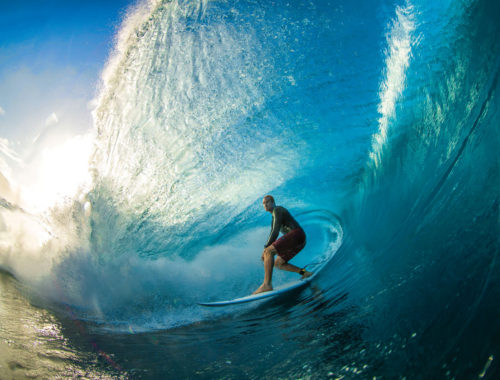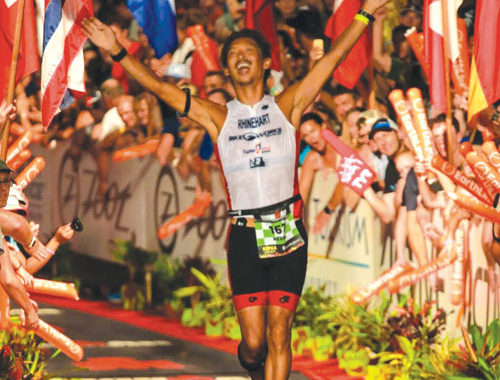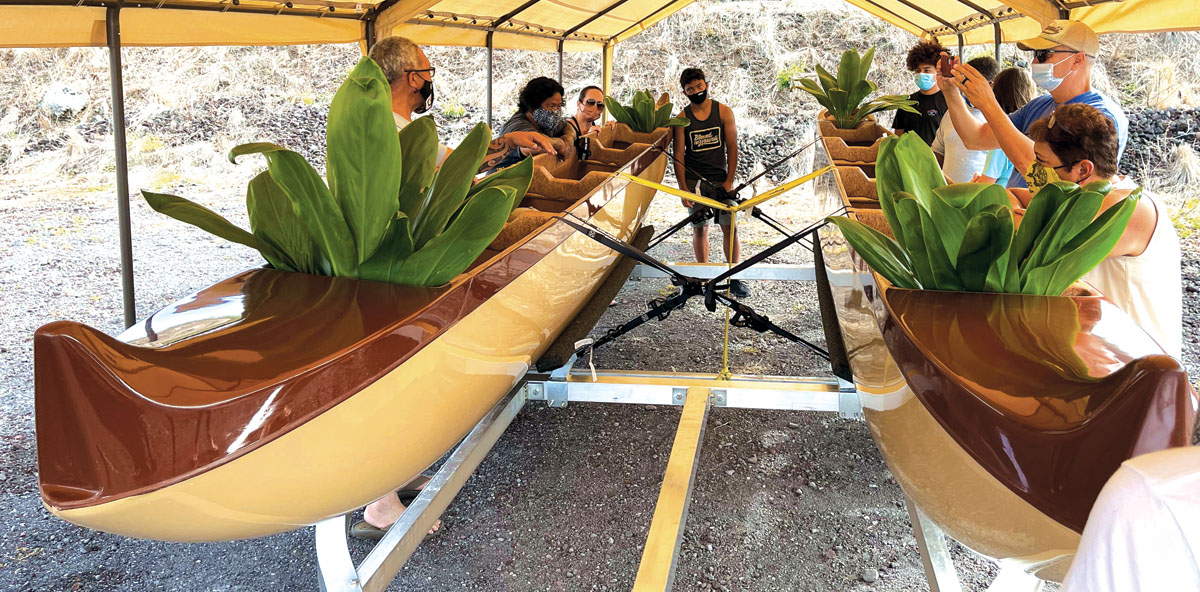
A Wa‘a Named La‘i‘ōpua
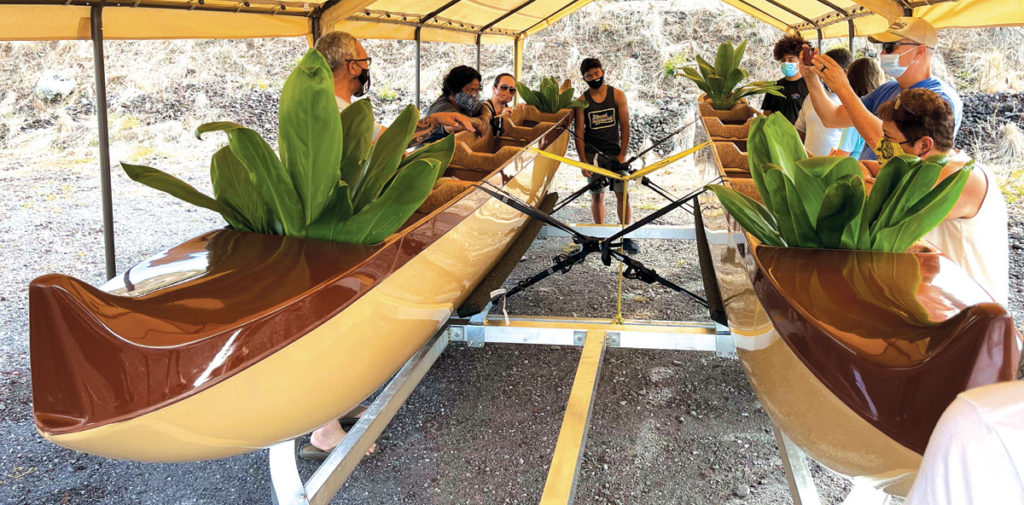
By Gayle Kaleilehua Greco
Being birthed on the ‘āina of Hawaiian homelands at the Villages of La‘i‘ōpua in Kailua-Kona is a wa‘a (canoe) by the same name, La‘i‘ōpua. Not since the Makali‘i was constructed in 1993, has there been an educational canoe on Hawai‘i Island built by the children of the area with the support of wa‘a builders, cultural advisors, kumu (teachers) and kūpuna (elders) overseeing the direction of this treasured vessel. There have been canoes built for canoe clubs and sailing voyages; however, the purpose of this canoe is for learning the tradition of Hawaiian canoe building, voyaging, and community involvement.
From ancient to modern times, the canoe has brought people together as ‘ohana (family), for a purpose, to voyage to places seen and unseen, known and unknown, taking with it the mana‘o of the people. Knowledge was transferred between cultures, with stories told and traditions shared. The voyagers brought back these gifts from afar, the experience of the land, sea, and stars, home to where ‘ohana waited with a welcoming embrace, everyone richer for the time spent together and apart. This is voyaging, the way of the canoe, touchpoints of gathering and sharing, growing and evolving.
Voyaging has long supported teamwork, togetherness, and planning for a sustainable future based on ancestral knowledge and the use of natural resources. Long before boats and other vessels were brought in, canoes once filled the ocean waters of Hawai‘i as means of coastal traveling, fishing, work, and play. The traditions of the canoe are the essence of Hawaiian culture, the far-reaching arc connecting keiki and kūpuna, community and ‘ohana, no matter whether on land or sea.
“A canoe is our mother, we treat it as we would our mother, it takes care of us like our mother, and we have respect for each other,” shares Chadd ‘Ōnohi Paishon, Pwo/master navigator and cultural advisor of the La‘i‘ōpua Wa‘a Project. Chadd explains to the students, “Everyone who stands on the deck of this canoe is your family because this is everybody’s mother—whether blood related or not—you stand as family with this canoe.” Binding together as ‘ohana, the residents of the Villages of La‘i‘ōpua and the surrounding community are working collectively to bring a canoe to life in the Kealakehe ahupua‘a (land division) of North Kona.
Experiential Program
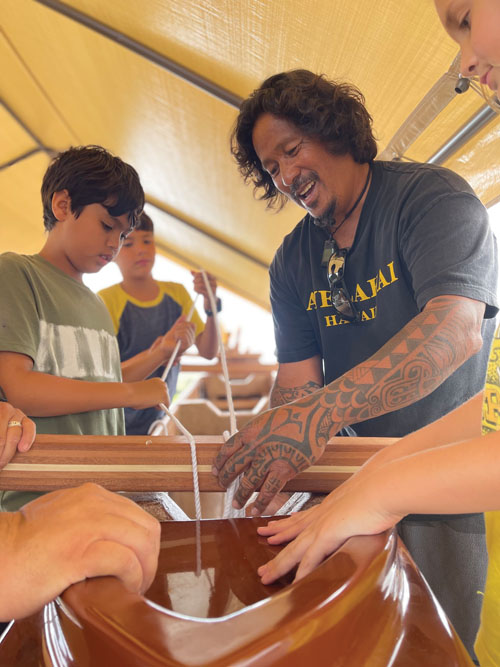
As part of a USDE Native Hawaiian Education grant which funds educational assistance to Villages of La‘i‘ōpua and the surrounding community, nonprofit organzation La‘i‘ōpua 2020 partnered with Kealakehe High School and Ocean Education Dive Club to create an innovative, accredited social studies program for high school students to not only learn academically, but to truly experience modern Hawaiian history. During the time of Covid restrictions, this experiential program gave students the opportunity to be together in an outdoor setting, learning the traditions of their ancestors. In addition to their school course work, 12 high school students gathered on six Saturdays for cultural hands-on learning. From field trips to historical sites, to proper naming of Hawaiian locations, plus time in the ocean and on land learning about natural resources, this unique program culminated in building a canoe. Each student contributed to the whole, and a bond has formed between them, socially and emotionally, as they lay the foundation of their own wa‘a ‘ohana.
Greg Harrs, the social studies/Hawaiian history teacher at Kealakehe High School for 20 years, is leading the students of the La‘i‘ōpua Wa‘a Project in a place-based learning style. He shares about the students’ experience of their huaka‘i (voyage), “They’re getting a sense of place and belonging, they are the kia‘i, the protectors. This is their place to protect and respect, and to carry on. They’ll remember this experience more than the academic word.”
Lessons of the Wa‘a
The growth, bonds and relationships that form with the canoe as the central focus bear witness to the sustainability of carrying forward the traditions of the past for generations to come. The children are learning the construct of values and legacies and how to weave dreams into their lives, starting with forming friendships and a common purpose of building the canoe. And so, a community within a community forms, giving each an opportunity to mirror and learn from one another.
Teaching the children about their kuleana (responsibility), Chadd explains, “What the canoe family needs is everyone to be present, to work together, to do their part; show up and give your 100 percent attention and intention. If you cannot, wait until you can. Only when all come together can the work be done for its uppermost purpose. Circumstances may change, course corrections are needed, flexibility lives amidst structure, and adaptiveness with sureness. Such is the lesson of the canoe.”

Similar to the message of the wa‘a, the programs and services of La‘i‘ōpua 2020 are a product of a much richer, deeper purpose, one that embodies the values of the native Hawaiians it serves. Ultimately, La‘i‘ōpua 2020 is about community, relationships, and growth; a place to help people gain wisdom and strength, collectively and individually, in any part of their lives. Working together to share dreams and expand their ultimate potential, the villagers of La‘i‘ōpua and residents of the surrounding area have many opportunities to bond together, build relationships and develop their capabilities.
Gathering resources is an inherent way of life for native Hawaiians. In keeping with this natural talent, the La‘i‘ōpua Wa‘a Project is guided by a team of local community members whose lives have been spent on the water, building canoes, or teaching traditional methods of work and life. The wa‘a team spreads far and wide as knowledge is shared from old to young and young to old, everyone learning and growing together.
“Building a canoe is not easy,” says Iko Balanga, a lifelong waterman. Iko and his wife, Holly, are part of the La‘i‘ōpua Wa‘a Project’s building team, teaching the children the many steps of modern canoe building and giving a hands-on experience of putting the parts together. The customized hulls of the La‘i‘ōpua wa‘a were made by Iko and his brother, Jun Balanga, along with their team. Building on traditions, the mana‘o (wisdom) of the Balanga water family reaches back generationally and now is being gifted to those who are participating in the wa‘a build.
When the six-week Kealakehe High School program ends in September 2021, the intent of La‘i‘ōpua Wa‘a Project is to have ‘Ohana Build Days where the community comes together to work on it, widening the net of knowledge, experience and fun on the very ‘āina where the neighbors live, work and play. “It’s about us as a community, bringing us together, something that has not been done in a long time,” says Iko.
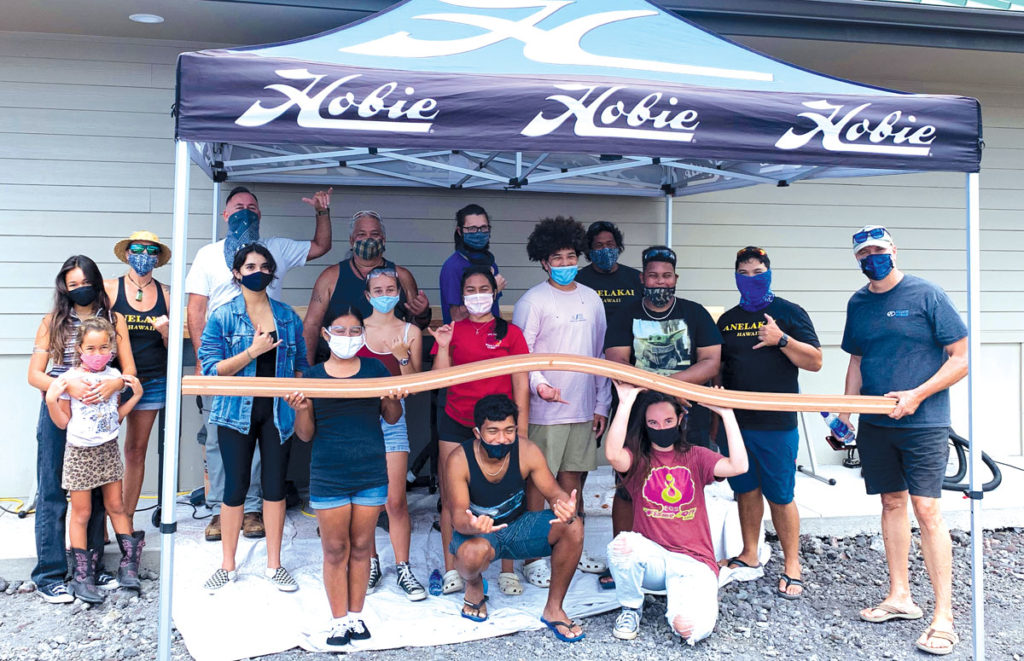
Community Participation
As part of the cultural resurgence, the beauty of the wa‘a is for families and community to experience a build, together bending the pieces of wood like flexible relations, lashing the canoe like bonds that tie ‘ohana together, and seeing the finished product, sailing unencumbered, ever forward. The metaphors run as deep as the sea. To lash the canoe is the physical form of binding the ties together to form a strong hold of the canoe parts. When done properly, the lashing will last a long time, even under the wear and tear of weather, elements, and use; the lashing holds the parts together. As time goes on, and journeys are made, the lashings will require attention, as do relationships and family. Loose ties get tightened up, bonds wear down and need to be strengthened, shared experiences and dedication enrich the whole. The stories and traditions of the lāhui (people) are in the present time now, ready to be shared forward in the hands of the keiki (children), knowing there is something in this experience for everyone.
Rooting the culture deep in the land and supporting the community for growth and expansion are at the heart of La‘i‘ōpua 2020—serving the residents of Hawaiian homelands, the Villages of La‘i‘ōpua, the Kealakehe ahupua‘a and surrounding areas. “This canoe belongs to the community, La‘i‘ōpua [Village], and beyond; passing on the knowledge for generations to come,” says Kawehi Inaba, La‘i‘ōpua 2020 board president. ❖
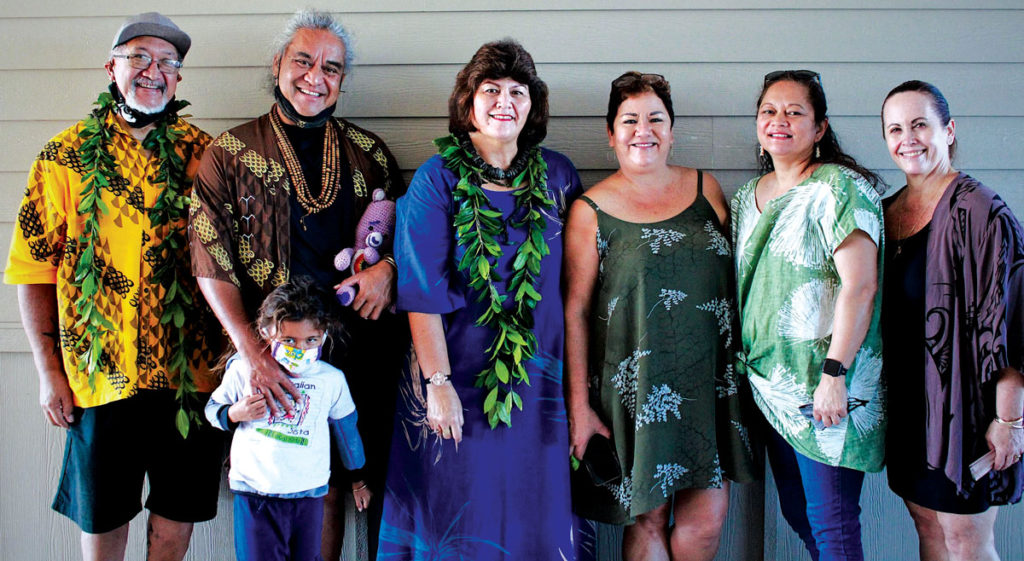
Mo‘olelo (story) of the Original ‘Oli for the Makali‘i
When Aunty Pua Case wrote this chant, her hālau was a part of the five organizations that took part in building the Makali‘i. This chant was a way of documenting this journey and it encompassed the Makali‘i and all of the community that came together to kōkua (be of service).
This ‘oli was about the process of the wa‘a being birthed, built and all the way to it being sailed. It honored two specific people, brothers Shorty and Clay Bertelmann.
The part of the ‘oli, “Hele ‘ē ka wa‘a i ke kai ē He ho‘okele wa‘a (no ka) lā ‘ino ē ‘A‘ohe e pulu, he waʻa nui ē” references how the wa‘a will glide across the ocean to arrive at its final destination because of the strong leadership (Uncle Shorty and Uncle Clay) guiding the journey.
Gifting of the ‘Oli
This ‘oli was gifted to the La‘i‘ōpua wa‘a by Chadd ‘Ōnohi Paishon at the community celebration which took place on July 10, 2021 on the grounds of La‘i‘ōpua. La‘i‘ōpua joins 28 wa‘a worldwide, and is the 29th to have been given this ‘oli to use as a pillar and reminder of the importance of community and the many good things that can be done when community comes together as ‘ohana. As Chadd says, “There will be bumps along the way, it wonʻt always be easy, but knowing we have each other to lean on, that we have the same goal and that because of our pilina, there is no doubt that we will reach our intended destination.”
The phrase, “Hele ‘ē ka wa‘a i ke kai ē He ho‘okele wa‘a (no ka) lā ‘ino ē ‘A‘ohe e pulu, he wa‘a nui ē” is meant to honor the La‘i‘ōpua 2020 leadership and those who guide and support them to be successful in all they do with the wa‘a as well as all other aspects of community.
Au ē Ua Hiti ē
By Pua Case
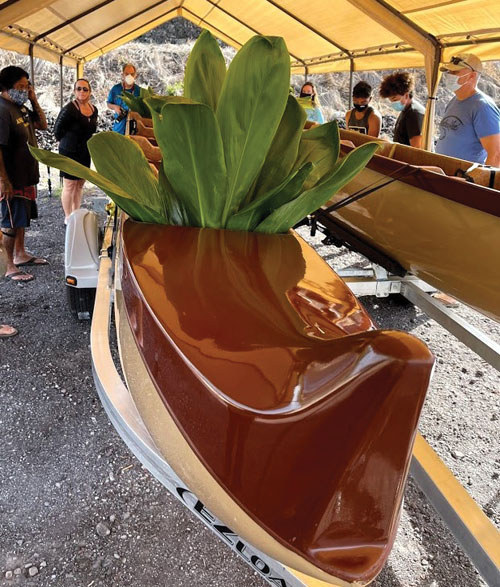
Au ē ua hiti ē, ua hiti ē ‘o La‘i‘ōpua ē
Au ē ua hiti ē
Hele ‘ē ka wa‘a i ke kai ē
He ho‘okele wa‘a (no ka) lā ‘ino ē
‘A‘ohe e pulu, he wa‘a nui ē
Au ē ua hiti ē
E lauhoe mai ka wa‘a i ke kā
I ka hoe
I ka hoe
I ke kā
Pae aku i ka ‘āina lā
Pae maila i ka ‘āina ē
Au ē ua hiti ē
At long last the La‘i‘ōpua has arrived
Yes, it has arrived
Said of a fast traveler
Said of a courageous person (reference to leaders)
One is safe in the protection of an important person (reference to leaders)
Indeed it has arrived
Pitch in with a will by everyone and the work is quickly done
Hunger is satisfied or one has arrived
Indeed it has arrived
All photos courtesy of La‘i‘ōpua 2020
For more information: laiopua.org
